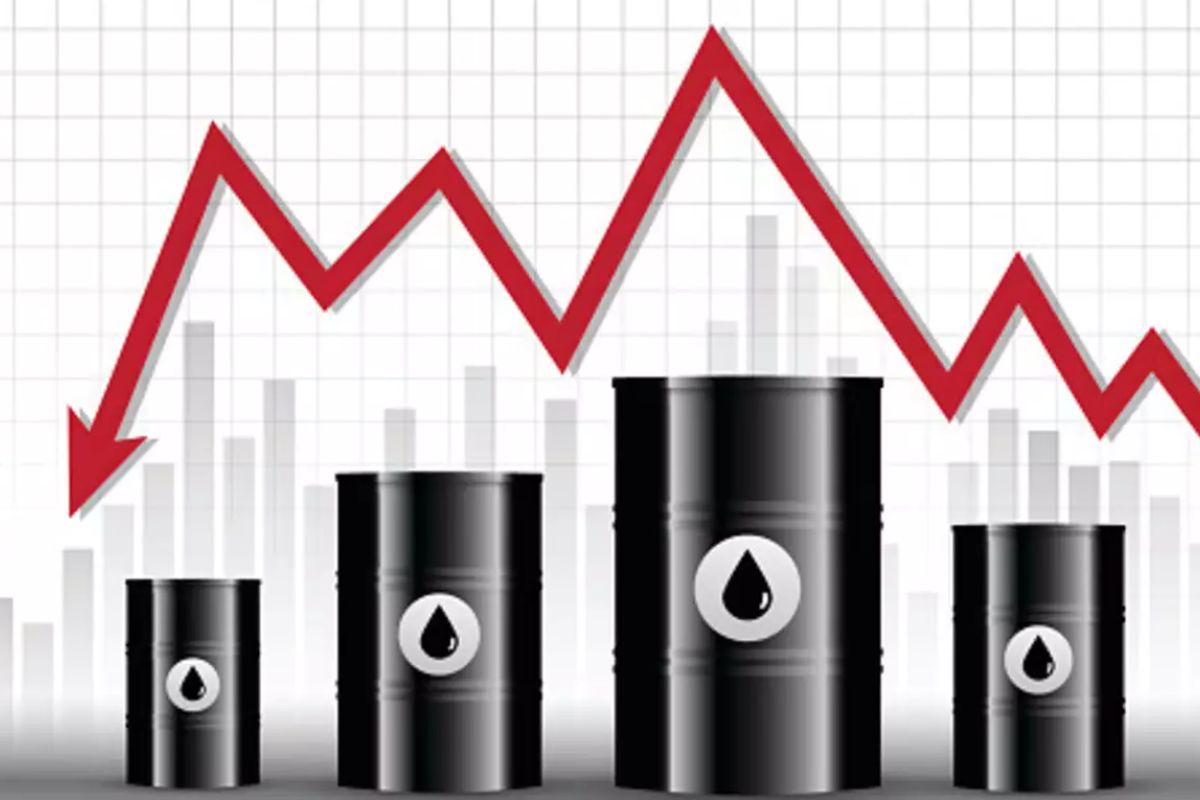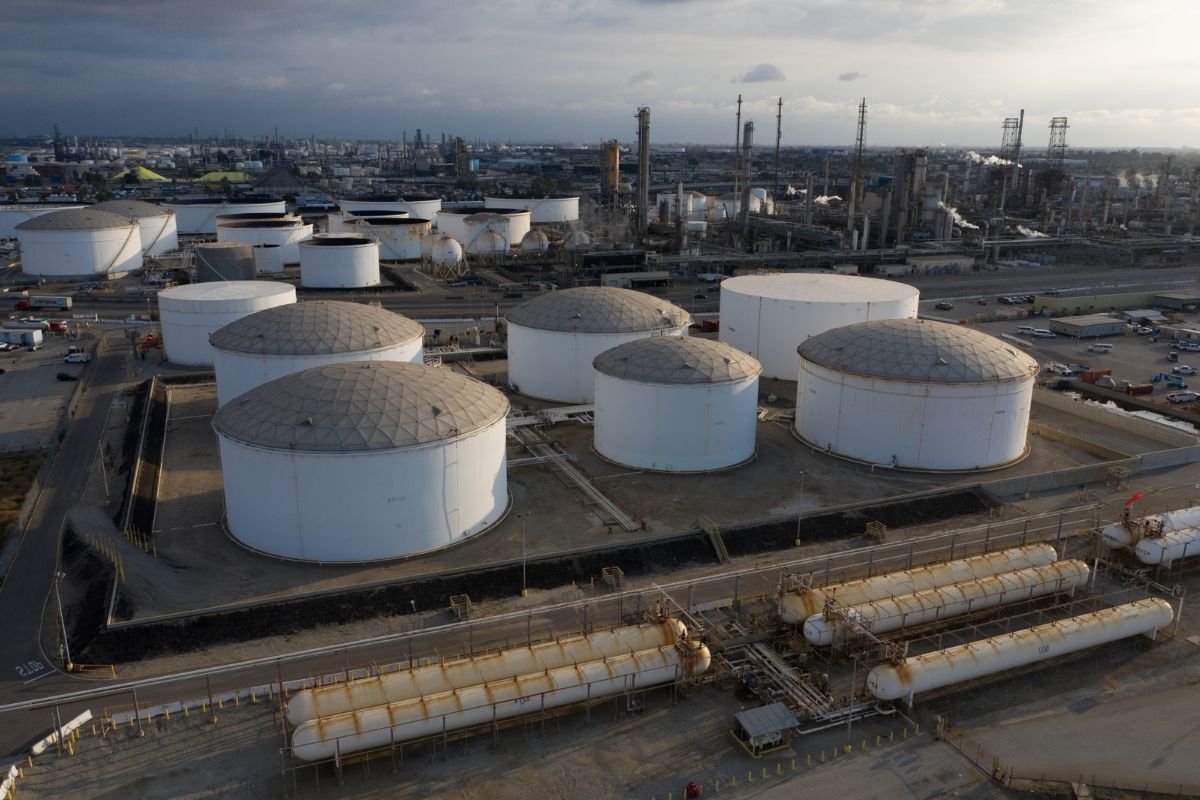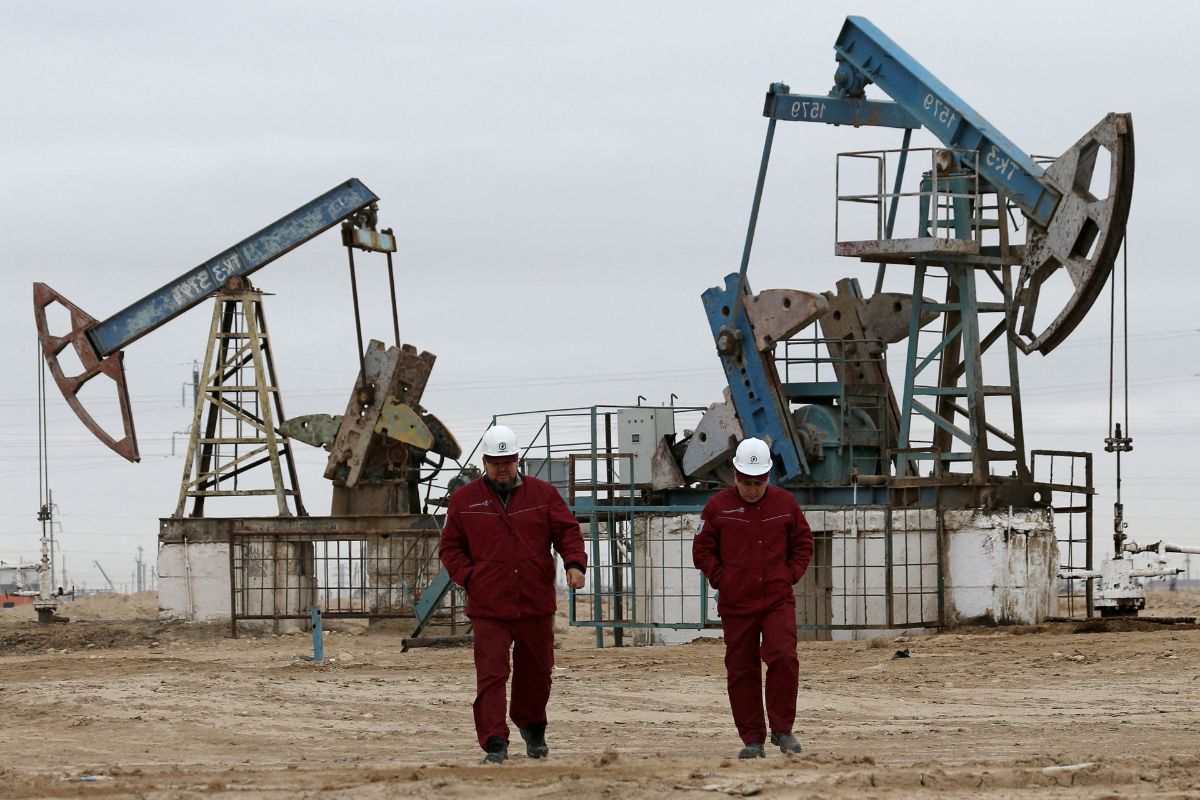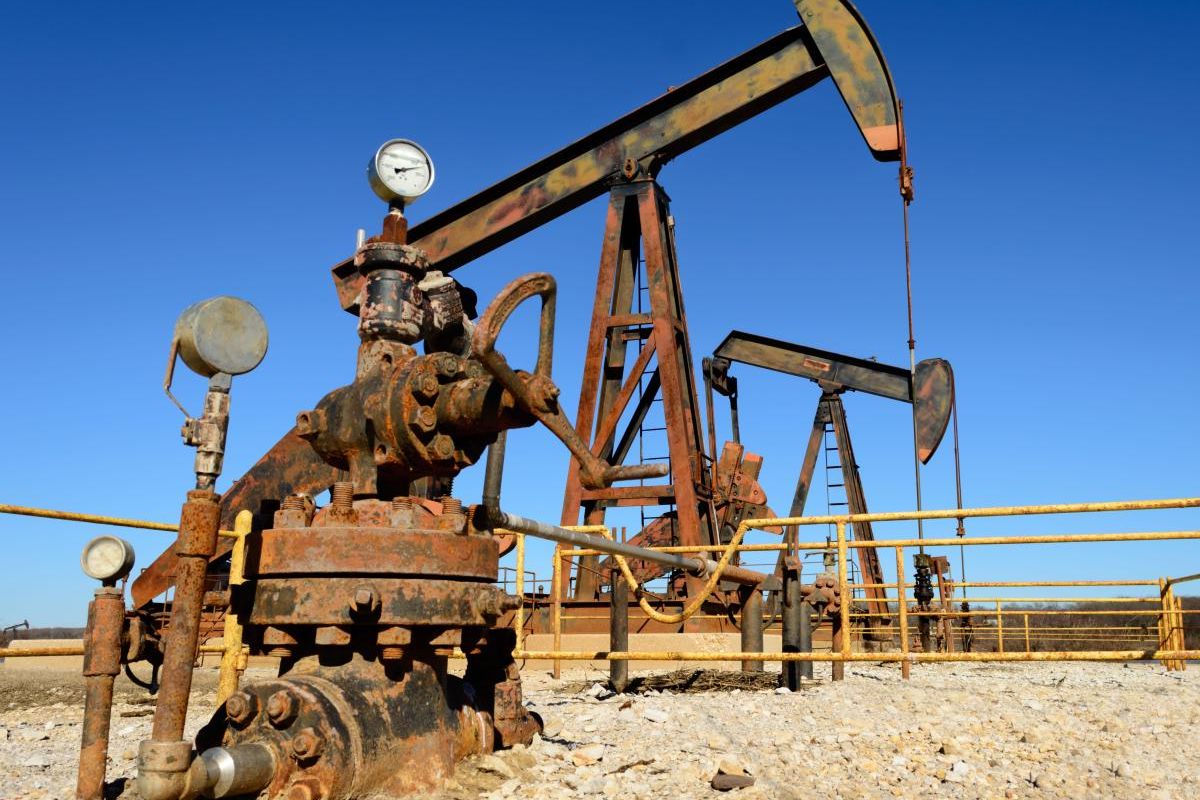Oil Dips on US Inflation Woes: Oil prices took a notable downturn as U.S. inflation woes and escalating demand concerns sent shockwaves through the market. The recent decline has left analysts questioning the sustainability of current pricing levels amidst a backdrop of economic uncertainty.
With the spotlight now on U.S. producer prices and the looming specter of inflation, market participants are left grappling with the implications of China’s post-holiday demand and the intricate dance between geopolitical developments and OPEC’s strategic decisions.
As the global political landscape continues to evolve, the potential ramifications for oil markets remain shrouded in ambiguity, leaving investors on edge.
Key Takeaways
- Oil prices decline due to U.S. inflation concerns.
- Market shifts focus to demand-side factors.
- Surge in producer prices sparks inflation fears.
- Impact on consumer purchasing power and business costs.
Oil Prices Slide Amid Demand Concerns
Amid growing concerns over demand fluctuations, oil prices witnessed a significant slide in response to shifting investor sentiments. The recent decline in oil prices comes as a stark reminder of the market’s sensitivity to changing demand dynamics. With reports of higher U.S. producer prices causing worries about inflation and potential interest rate hikes, investors are now closely monitoring the impact on fuel consumption growth, particularly in the world’s largest oil consumer.
Brent crude futures took a hit, dropping by 0.7%, while the U.S. West Texas Intermediate crude, set to expire, saw a 0.5% decrease. These price movements signal a shift in focus from previous geopolitical tensions to renewed concerns about demand-side factors shaping the oil market landscape. The market’s response underscores the intricate balance between supply and demand forces and the cascading effects of economic indicators on oil pricing.
Also Read: Oil Stalls as IEA Outlook Dims US Rate Cut Optimism
As investors navigate this volatile terrain, the spotlight remains firmly on how demand trends will evolve in the coming weeks.
U.S. Producer Prices and Inflation Worries
Are U.S. Producer Prices Sparking Inflation Worries in the Oil Market?
The recent surge in U.S. producer prices has sent shockwaves through the oil market, igniting fears of inflation and economic instability. The unexpected rise in service costs has set off alarm bells, prompting concerns about the repercussions on oil prices and consumer purchasing power. This sudden shift has rattled investors, leading to a reevaluation of market dynamics and a renewed focus on demand-side anxieties. Let’s break down the impact of these inflation worries:
| Key Points | Impact | Implication |
|---|---|---|
| Higher Producer Prices | Increased Costs for Businesses | Reduced Profit Margins |
| Inflation Concerns | Market Uncertainty | Volatile Trading Behavior |
| Interest Rate Speculation | Higher Borrowing Costs | Decreased Investment Activity |
The ripple effect of these producer price hikes is undeniable, casting a shadow of doubt over the future trajectory of oil prices and the broader economy. As inflation fears continue to loom large, market participants brace themselves for a bumpy ride ahead.
Uncertainty Surrounding China’s Post-Holiday Demand
Investors eagerly await insights into China’s post-holiday oil demand trends, poised to decipher its impact on the global oil market landscape. The return of trading activity post-holiday and the muted influence of Presidents’ Day in the United States add further complexity to market dynamics.
The uncertainty surrounding China’s post-holiday demand has become a focal point for many in the oil market, with expectations running high regarding the direction it may take. As China emerges from the Lunar New Year holiday, the following factors are crucial in shaping the narrative:
- Return of Trading Activity: The resumption of trading in China post-holiday will offer valuable clues about the country’s oil consumption patterns.
- Global Oil Consumption Outlook: China’s demand trends post-holiday will play a pivotal role in shaping the overall assessment of global oil consumption.
- Market Dynamics: The interplay between China’s post-holiday demand and other market factors will determine the trajectory of oil prices in the near term.
Geopolitical Developments and OPEC’s Role
Geopolitical tensions escalate as OPEC‘s pivotal role in the global oil market landscape faces heightened scrutiny amidst recent developments.
The weekend saw Israeli airstrikes targeting the Gaza Strip’s hospital, adding fuel to the already raging fire of conflict. Moreover, Houthi rebels claimed responsibility for an oil tanker attack, further complicating the situation.
With OPEC boasting a spare capacity of 6.4 million barrels per day, it seems well-equipped to handle any disruptions. However, concerns loom large as the International Energy Agency predicts a slowdown in demand growth by 2024, painting a bleak picture for the oil market’s future.
The uncertainty surrounding geopolitical conflicts coupled with fluctuating demand dynamics creates a recipe for volatility in oil prices. Investors and market watchers are on edge, closely monitoring every development in this high-stakes game of supply and demand.
OPEC’s actions in the coming weeks will be crucial in determining the market’s direction amidst these turbulent times.
Global Political Landscape and Potential Implications
The escalating conflicts in the Middle East and Eastern Europe are sending shockwaves through the global political landscape, raising critical questions about potential implications on oil markets and international relations.
The United Nations Security Council is bracing for a vote on an Algerian ceasefire proposal for the Israel-Hamas conflict, with whispers of a looming U.S. veto adding fuel to the geopolitical fire.
Meanwhile, Russia’s bold move in securing control over the Ukrainian town of Avdiivka and the suspicious death of Alexei Navalny, a vocal critic of Russian President Putin, are stirring up concerns about the potential fallout on the world stage. Moscow, a key player as the second-largest oil exporter globally, now finds itself standing on shaky ground, with the shadow of possible sanctions looming large post-Navalny’s demise.
Will the U.S. wield its veto power in the UN Security Council, sparking further tensions?
How will Russia’s aggressive moves in Ukraine impact its relations with the West and oil markets?
Can Moscow navigate the storm of potential sanctions following Navalny’s controversial death?
Conclusion Of Oil Dips on US Inflation Woes
In conclusion, the oil market is facing a perfect storm of uncertainty and volatility.
With U.S. inflation concerns, China’s post-holiday demand, geopolitical tensions, and OPEC’s role all adding to the mix, it’s no wonder that oil prices are dipping.
The global political landscape only adds to the chaos, leaving investors and consumers on edge.
It’s a rollercoaster ride that shows no signs of slowing down.
Our Reader’s Queries
Q1 How does oil prices affect inflation?
A Increased oil prices lead to elevated production and transportation expenses across the economy. These costs are subsequently transferred to food and core prices. Moreover, heightened energy costs can influence consumer and business perceptions, potentially contributing to an indirect uptick in current food and core prices.
Q2 How do interest rates affect oil prices?
A As per Akram’s research in 2009, oil prices tend to rise following a decrease in real U.S. interest rates. Additionally, Arora and Tanner’s 2013 study validates this inverse correlation, illustrating that in the face of an unforeseen increase in ex-ante real interest rates, oil prices experience a downturn.
Q3 Why is crude oil price falling?
A On Wednesday, oil futures experienced a $1 per barrel decline, driven by a substantial increase in U.S. crude inventories, causing a downward pressure on prices. Additionally, concerns about a potential security threat to the U.S. loomed, posing a potential risk to oil demand in the world’s largest economy.




